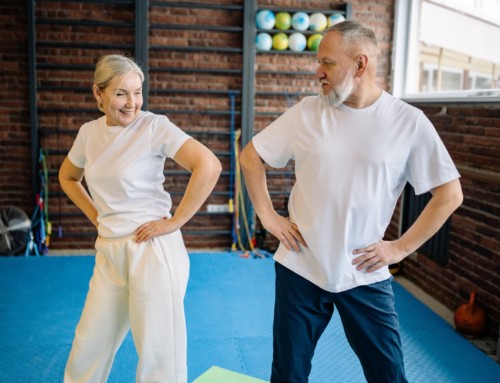Warming up is an essential part of any fitness routine, and provides the body with a chance to prepare for injury-free exercise. Warming up your muscles allows them to be more flexible and efficient during your workout, and offers your body the opportunity to gradually increase your heart rate and breathing to prepare for more vigorous exercise. A warm-up session takes place immediately prior to physical activity and often consists of gentle cardiovascular exercise and stretching.
Why Is Warming Up Important?
Warming up not only mentally prepares you for the activity ahead, but it helps dilate blood vessels, increase heart rate, and supplies your muscles with the oxygen they need to work efficiently. The temperature of your muscles raises to allow for additional flexibility, which can help prevent strain on ligaments, tendons, and joints. By slowly revving up your engine, you allow your heart to prepare and reduce the overall stress placed on your cardiovascular system.
Warming up is critical to injury prevention, and reaching the ideal range of motion, respiratory performance, and circulatory operation to help you get the most out of your workout, worry free. Whether you are going for a light jog or participating in a high-intensity sports game, the warm-up is essential for proper injury prevention, and it can help you perform at your best. It also enables a better recovery post-exercise and decrease the soreness and stiffness that can often come after a comprehensive workout.
How to Warm-Up
Your warm-up session should include cardiovascular exercise, strengthening, and stretching. All of these activities help increase the internal body temperature and will raise your heart rate, preparing it for further movement. A warm-up should include a gentle increase in activity from 10 minutes to half an hour (the more intense the future activity, the longer your warm-up should be). This provides plenty of time for a gradual increase in physical activity, an increased respiration rate, and higher internal muscle temperature.
- Increase Your Heart Rate – For most activities, a warm-up can include jogging slowly for 10-20 minutes in advance of the next activity.
- Stretch – Stretching your muscles is critical to injury prevention. Once you have increased your heart rate and warmed up your muscles, include some side bends, forward bends, and roll out your ankles, wrists, and shoulders. Stretching should not be painful; hold stretches for 10-15 seconds only, and stop when you feel discomfort.
- Challenge Your Muscles – Include some light, easy strengthening activities into your warm-up, such as light squats, lunges, push-ups, or pull-ups. If you are warming up for strength training, include some low weight repetitions into your warm-up.
Warm-ups can help prevent injury and allow you to give your exercise regimen your best effort. They slowly increase your heart rate, and stretch out your muscles to prevent injury during activities. And remember, cool-downs are just as important to gradually decrease your heart rate and return your muscles to a comfortable resting state post-workout. Give your body the opportunity to prepare for exercise. If a certain area feels especially sore or tight, spend extra time warming it up before moving on to more intense exercise. A warm-up is a great time to get in touch with your body and check in to make sure everything is working properly before placing it under further strain. Warming up can help keep you fit and injury-free, and enables you to continue exercising to the best of your ability.





